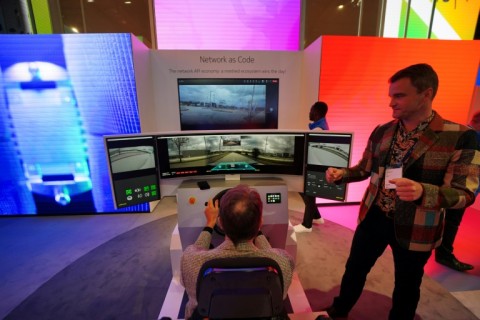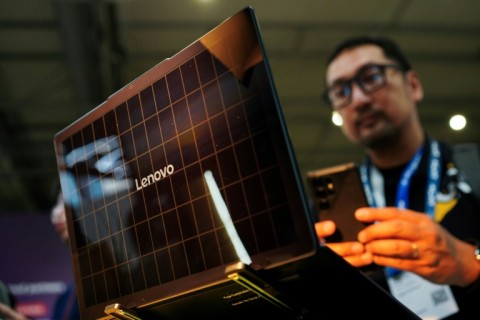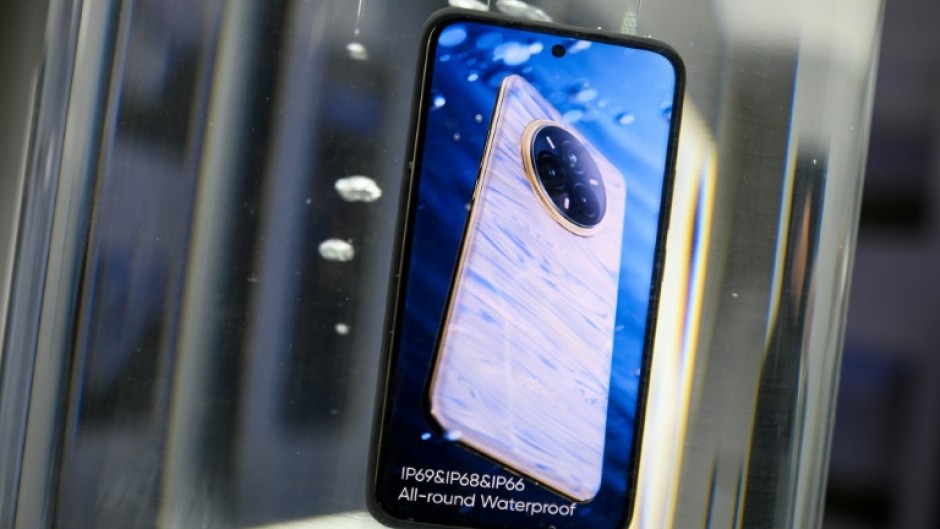As the world’s biggest wireless technology fair, the Mobile World Congress in Barcelona is packed with manufacturers showing off their latest gadgets and inventions.
This year’s stands have looked to wow visitors with an ultra-lifelike humanoid robot, colour-changing smartphones, smart contact lenses and many more.
‘Spatial sound’ in phone calls
Mobile equipment builder Nokia and operator Vodafone say their “3D spatial sound” will offer users “truly immersive audio” on phone calls, with the person on the line sounding as if they are in the same room.
Where current calls use only a single audio channel to transmit the voice, the new system allows for sounds seeming to come from different directions.
Dubbed “Immersive video and audio services” (Ivas), the technology requires handsets fitted with two microphones.
That combined with the need for a high-speed 5G connection means the technology could take several years to reach most users.
High-fidelity robot
Sporting a black dress, red jacket and long brown hair, ultra-realistic humanoid robot Amira is on display by Emirati telecom operator Etisalat.

While imitating human features with high fidelity, Amira’s movements remain recognisably slow and jerky.
Elliott White of the robot’s creators Engineered Arts said that the device coud be connected to any generative AI “large language model” to allow interactions with people.
Remote driving

There is no shortage of connected cars on the floors at MWC, but visitors were able to test-drive a vehicle 3,000 kilometres away in Finland at the stand of congress organiser GSMA.
The setup — nothing but a wheel and some screens — was created by Estonian firm Elmo, which has fitted the cars with a custom controller and multiple cameras, alongside Nokia.
Chameleonic smartphone
Chinese manufacturer Realme has developed a smartphone that changes colour as the outside temperature shifts.
The body of its 14 Pro line, textured to look like a seashell, is infused with thermochromic pigments that shift to blue below 16 degrees Celsius or white when it gets warmer.
The smartphone maker admits that the purely decorative feature has a limited shelf-life.
“The cold-sensitive color-changing function will gradually lose effect due to daily use,” Realme says.
Smart contact lenses
Dubai-based startup Xpanceo is aiming to fit smart features including an “extended reality” display, health monitoring and wireless power reception into a flexible contact lens.
Demonstrator models at their stand show off proofs of concept for each of the capabilities that co-founder Roman Axelrod says they want to pack into a single prototype device “by the end of 2026”.
For now the devices are relatively clunky, with a large metal coil needed to receive the wireless power to light up a single pixel on one demonstration lens.
Those components would be miniaturised using “two-dimensional materials… only one atom thick,” Axelrod said.
“That is the scientific know-how that differentiates us”.
Solar-powered laptop
Chinese PC builder Lenovo has built solar panels into the lid of its Yoga Solar laptop to extend battery life.
Its 84 solar cells are able to feed power into the device even when not exposed to direct sunlight, Lenovo says.

The laptops will be fitted with a power monitoring system to manage when the solar panel comes into play.
“This innovation allows the solar panel to absorb and convert enough direct sunlight in 20 minutes to power up to one hour of video playback on the PC,” Lenovo said.
“Cat Eye” to spot cataracts
Spanish mobile operator Telefonica has joined forces with startup Edgendria Innovacion to build its “Cat Eye” tool.
Users can carry out an ophthalmological exam on themselves to determine whether they have a cataract serious enough to require surgical intervention.
A simple photo of each eye is churned through an AI-powered platform to detect the ailment.
This means doctors can “delegate certain tasks to their team so that they can intervene at the right time, making better use of their time,” Telefonica said.


